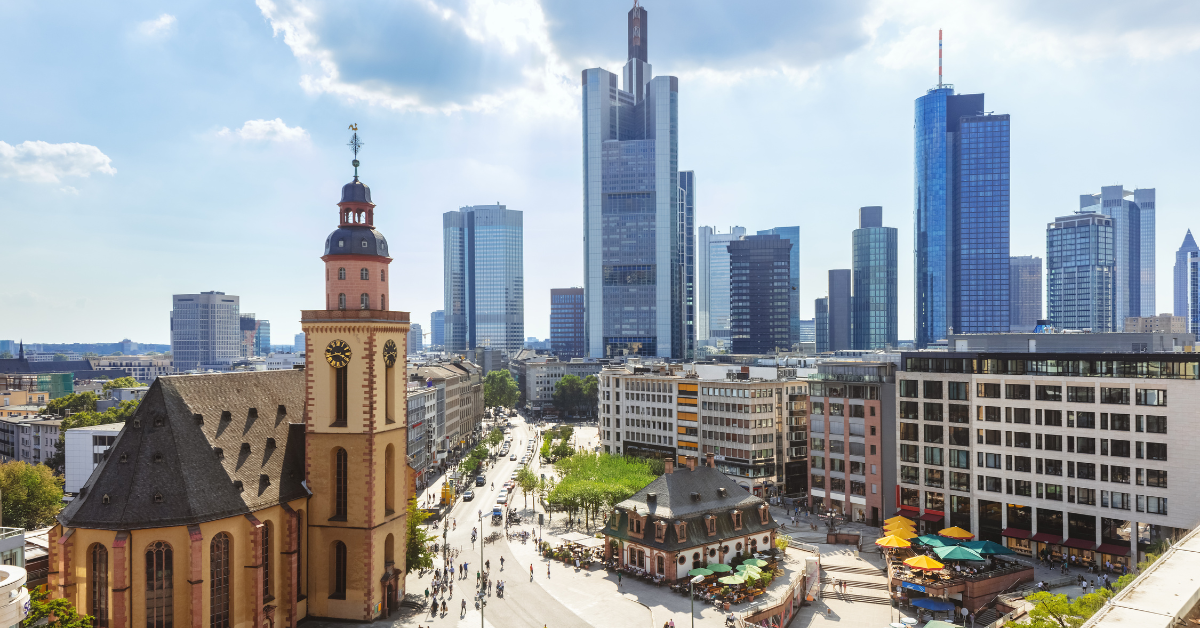Frankfurt is not only the financial heart of Germany but also known in Japan as a synonym for sausages. Once written in Kanji as “仏蘭克弗,” this unique notation still holds historical significance. This article explores the dual perception Japanese people have of Frankfurt, as both a city and a culinary symbol.
The Kanji Notation of Frankfurt: “仏蘭克弗”
The expression “仏蘭克弗” was used from the Meiji period through the early Showa era as a phonetic transcription of foreign place names into kanji. At that time, France was written as “仏蘭西,” the Netherlands as “和蘭,” and Portugal as “葡萄牙.” In the same fashion, Frankfurt was written as “仏蘭克弗.”
These characters were chosen not for their meaning but for their sound, making foreign names more accessible to Japanese readers. Today, Roman letters and katakana are standard, and such kanji transcriptions survive only in historical texts and maps. Still, they remain a fascinating cultural artifact, symbolizing how Japan integrated Western culture.
| City name | Kanji notation | Modern notation |
|---|---|---|
| France | 仏蘭西 | France |
| Netherlands | 和蘭 | Holland / Netherlands |
| Portugal | 葡萄牙 | Portugal |
| Frankfurt | 仏蘭克弗 | Frankfurt |
These examples reflect how Japan once sought to interpret and internalize the Western world.
The Image Japanese People Have of Frankfurt
In Japan, when people hear the word “Frankfurt,” many first think of sausages. Sold at street stalls and festivals, the name has become synonymous with food.
At the same time, Frankfurt as a city evokes several strong impressions:
- Center of finance – Home to the European Central Bank and major financial institutions, Frankfurt plays a crucial role in the European economy.
- Transport hub – Frankfurt International Airport is one of the world’s busiest, often serving as Japan’s gateway to Europe.
- Fusion of history and modernity – As Goethe’s birthplace, the city has deep literary roots, yet its skyline is dominated by modern skyscrapers.
- Symbol of food culture – Famous for its sausages and apple wine, it offers a distinctly German culinary identity.
| Image among Japanese | Example | Impression |
|---|---|---|
| Financial city | European Central Bank, Stock Exchange | International business hub |
| Transport hub | Frankfurt Airport | Gateway to Germany |
| Cultural city | Goethe Museum, Christmas Market | Arts and tradition |
| Food culture | Sausages, apple wine | Iconic German cuisine |
The coexistence of city and cuisine in one name makes Frankfurt especially distinctive to Japanese people.
Frankfurt’s Cultural Appeal
Frankfurt is not only an economic center but also a cultural powerhouse. The Goethe Museum and the Museum of Modern Art attract many visitors, while the city’s Christmas Market is considered one of Europe’s finest, leaving lasting impressions on Japanese travelers.
Its half-timbered old town buildings stand alongside glass skyscrapers in the financial district, creating a striking urban contrast. For Japanese, this reinforces the image of Frankfurt as a city where tradition and innovation coexist.
The city also has a strong connection with Japan. With Japanese schools, restaurants, and communities, it offers a sense of security and familiarity to visitors, further cementing its reputation as an international city.
| Field | Example | Characteristic |
|---|---|---|
| Literature | Goethe’s birthplace, literary festivals | Center of German literature |
| Arts | Museum of Modern Art, Opera House | Blend of tradition and modern art |
| Events | Christmas Market | Seasonal culture and tourism |
| Lifestyle | Japanese cuisine, international exchange | Multicultural coexistence |
Frankfurt as a Culinary Icon
The Frankfurt sausage shares its name with the city and has become widely recognized in Japan. In Germany, the sausage is typically made from pork, with a simple but rich flavor, often paired with bread and beer.
In Japan, it has taken on a new form. Sausages are enjoyed at street stalls, convenience stores, and home kitchens, becoming a staple of everyday life. It is rare for a city name to be so strongly associated with a food item, which underlines Frankfurt’s unique cultural resonance.
| Item | In Germany | In Japan |
|---|---|---|
| Main ingredient | Primarily pork | Pork, chicken, and others |
| Serving style | With bread and beer | On skewers, at stalls, events |
| Characteristic | Simple, authentic taste | Casual, accessible food |
| Cultural meaning | Regional specialty | Food symbol tied to city name |
Through sausages, Frankfurt has entered Japanese food culture and continues to be loved in everyday life.
Conclusion
The kanji notation “仏蘭克弗” is a historical remnant of how Japan once phonetically transcribed foreign place names. Though no longer used, it serves as a valuable record of the country’s engagement with Western culture.
For modern Japanese people, Frankfurt is at once a global financial hub, a cultural destination, and a beloved name for sausages. This multifaceted identity is what makes Frankfurt a city of special significance.
By visiting Frankfurt, one can experience its economic dynamism, cultural depth, and culinary delight all at once. Its diverse charm continues to fascinate Japanese people today.






